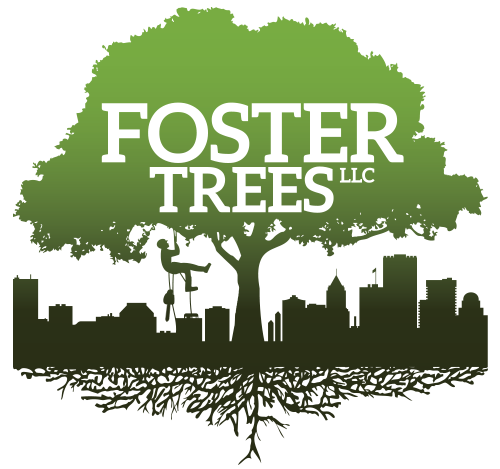As self-professed tree nerds, we put in the time and effort it takes to prune your tree in accordance with the best tree science principles.
Our certified arborists always prune your trees to meet International Society of Aboriculture standards for best practices, ensuring the health and vitality of your tree for years to come. Read on for more information on the different types of pruning services we offer.
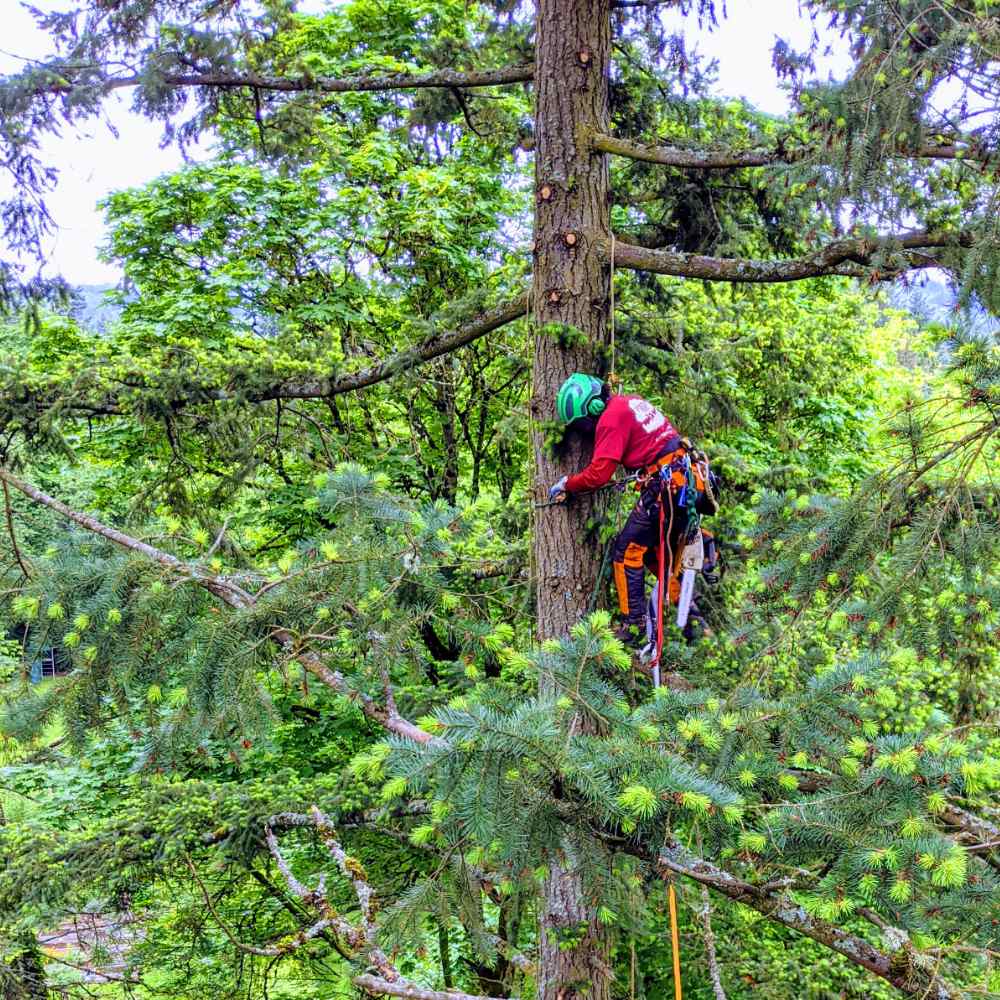
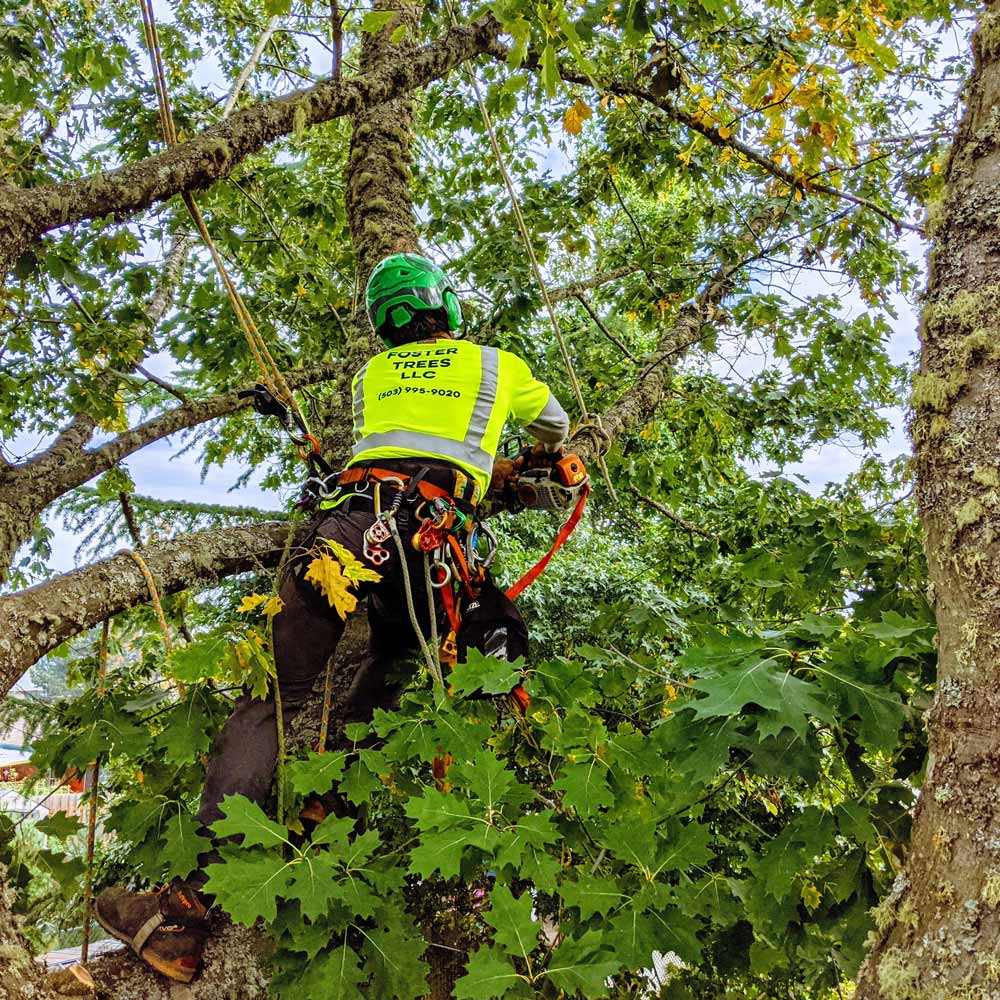
Building Clearance and Crown Raise up
This kind of pruning involves removing limbs that have grown on or near a building or structure. With safety as our top priority, our certified arborists can assess exactly how many and which limbs to remove to ensure the health of your tree, as well as keep it growing and thriving in a direction away from your house or building.
We’ll be careful to ensure that we don’t remove too much material from the crown of the tree, which can be detrimental to your tree’s overall health.
Hazard Pruning
Hazard pruning involves removing any large hanging dead limbs in the tree, as well as any limbs that have a potential for failure, such as those that are cracked, broken, or diseased. This pruning also includes a full canopy inspection to check for any structural defects or vulnerabilities that could become issues due to wind or weather conditions.
Often, we’ll climb a tree to inspect branch unions and get a look at areas of the canopy that can be difficult to see from the ground. Hazard pruning can also include prevention, by pruning away branches that are growing in ways that can become dangerous down the road.
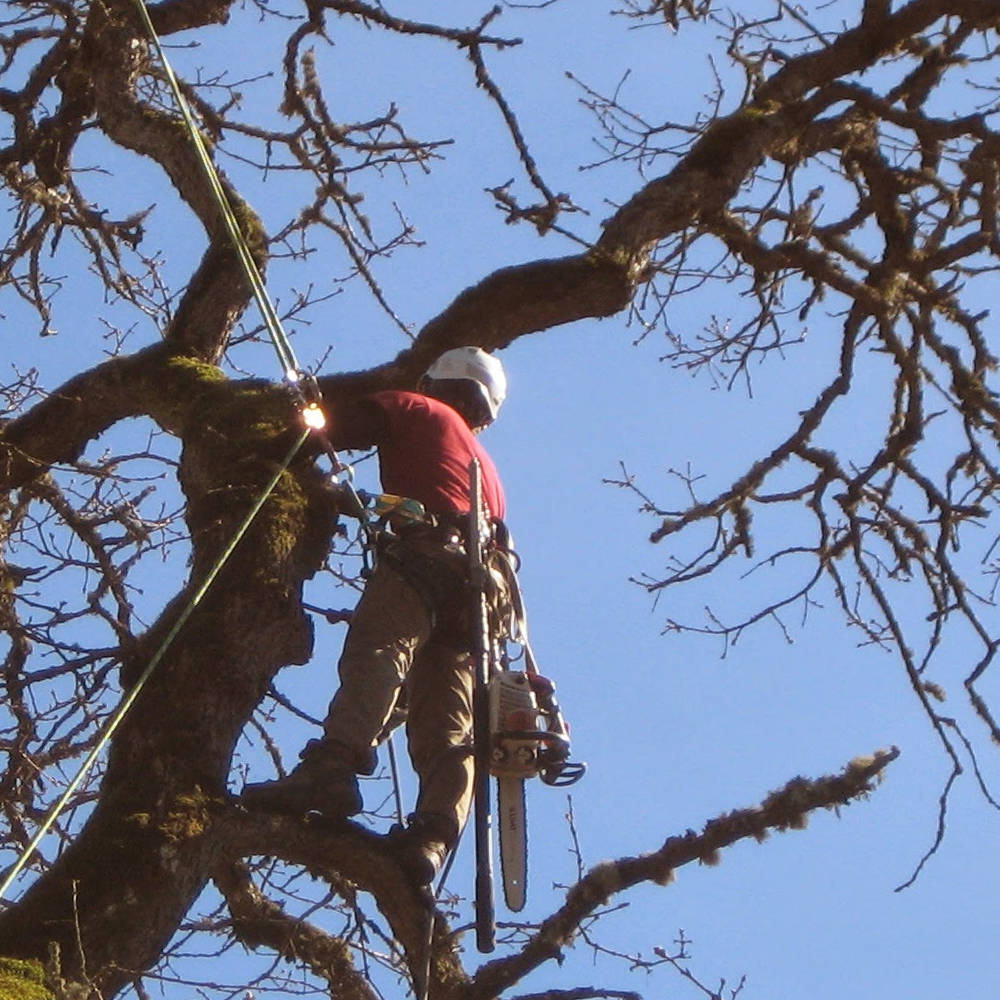
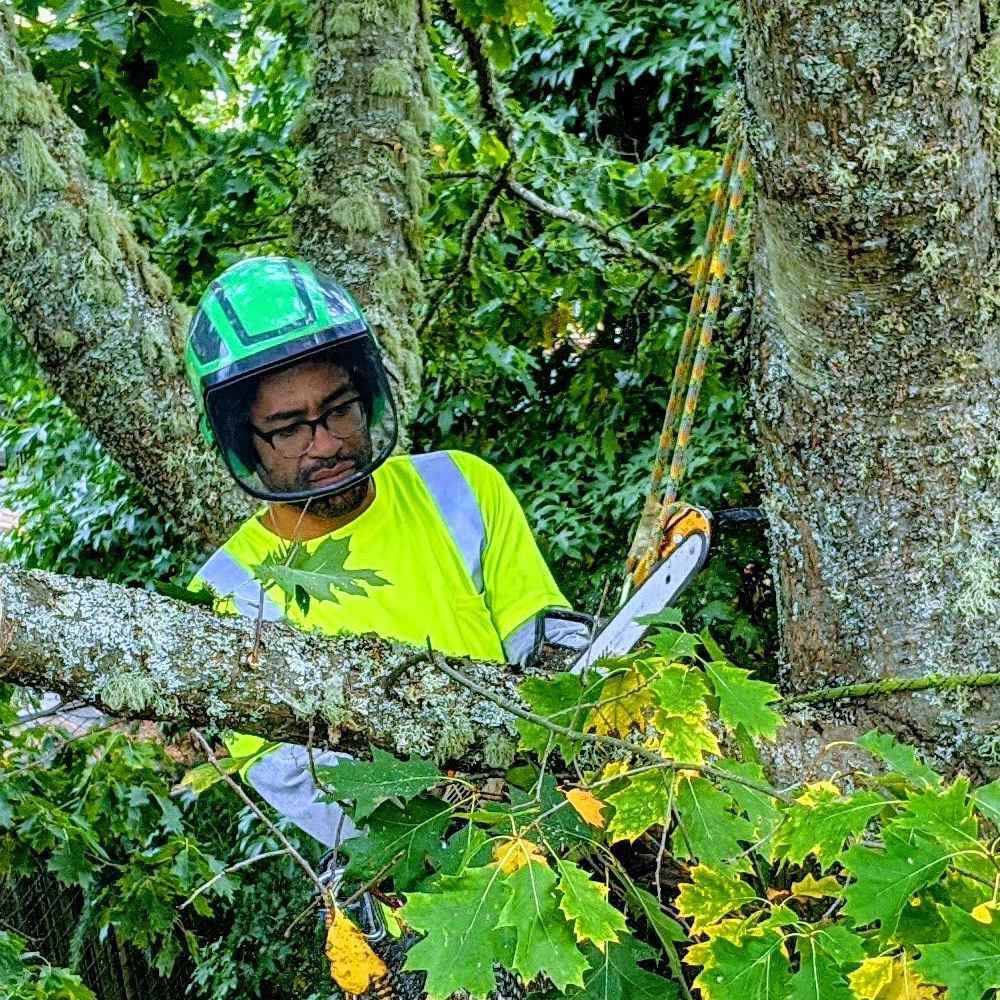
Weight Stress Reduction
In trees like large Douglas firs, limb breakage can occur in branches that are horizontally very long. Reducing the length of these branches reduces the force on the branch overall (think of these long branches as long levers) and can reduce the likelihood of breakage in significant wind conditions.
We sometimes recommend this kind of weight reduction to help preserve a tree’s overall longevity.
Structural Pruning
We often recommend pruning cuts to improve the structure of a tree. Sometimes these pruning cuts allow additional light penetration into the crown, and sometimes they might be larger cuts that will help to eliminate or reduce branches that are rubbing or crossing over one another. This can also sometimes involve thinning, or removing branches interior to the crown to allow more light penetration.
Structural pruning can be especially helpful in young trees, when we can more easily correct the tree’s shape or response to its environment.

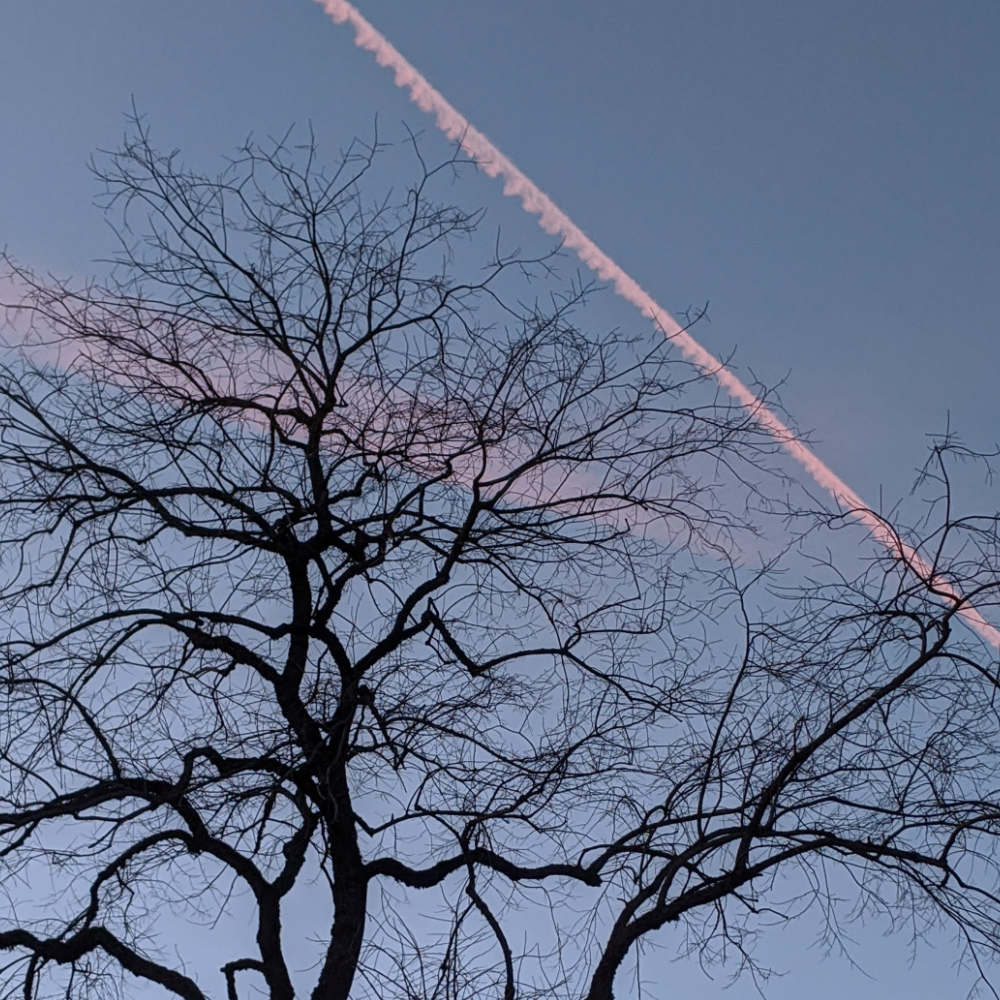
Height or Size Reduction
We are sometimes asked if we can reduce the overall height of a tree by topping it. We generally recommend against topping of trees as it can introduce decay, cause a tree to respond poorly with poor structural development, and frequently causes more problems than it solves.
If you’re concerned about the height of your tree, we may be able to help by pruning it with correct arboricultural practices. The best way to ensure that you're happy with the size of your tree is by planting the right tree in the right place. We can provide recommendations on that, too.
Not sure what type of pruning you need?
We can help. Fill out our free estimate form to discuss your pruning needs with us.
